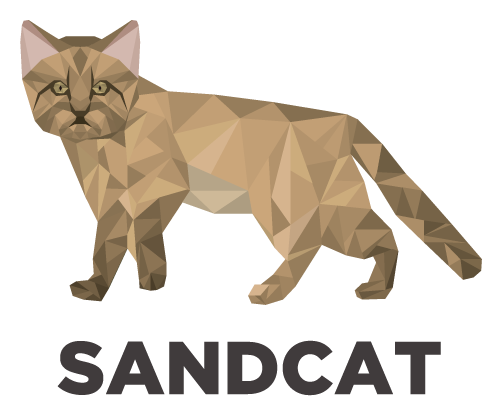Congratulations! Calvin Loncaric and Spencer Pearson won gold and bronze, respectively, in the FSE Student Research Competition Graduate Division. And Martin Kellogg and Chris Mackie won gold and bronze respectively, in the Undergraduate Division!
The UW SandCat is a whole-stack platform for exploring software adaptation. The stack spans data visualization, the client-side web browser, networked databases, application compute servers, operating systems, file systems, and storage devices. A modern system stack is forced to (1) accommodate the growth in data volume and data bandwidth that exceeds Moore's Law; and (2) support energy-efficient mobile devices that can neither store all necessary data nor perform the computation at the desired real-time latency. To meet these two goals, SandCat adapts by aggressively approximating both the data and the computation, as well as by performing the computations incrementally for example by executing database queries on live data incrementally.
The driving application for this DARPA-funded project is adaptive visualization of big data. SandCat will support data scientists who interactively and collaboratively explore a large dataset that is updated live from sensors, cameras, and laboratory instruments. We use data scientists as a model of military data specialists who work in intelligence, reconnaissance, logistics, weapons development, and other tasks. Data visualization is compelling application for adaptive system stacks because a visualization query calls for adaptations at all levels of the stack: in order "compute" a million pixels per 30ms, data analysis must be computed incrementally, the database may need to fetch only the data that are currently visible on the screen, and the storage may need to read only the high-order bits of the requested data. Further adaptations are necessitated by the range of clients, which can be a workstation on a 10Gbps networks or a smartwatch on a 2G cellular connection.
News
-
17 November 2016
-
04 November 2016
Congratulations! Helgi Sigurbjarnarson, James Bornholt, Emina Torlak and Xi Wang won Best Paper for “Push-Button Verification of File Systems via Crash Refinement” at OSDI 2016.
-
05 October 2016
Luke Nelson and Jared Roesch presented a poster on their work bootstrapping a secure eBPF compiler in Coq at OSDI 2016
-
18 September 2016
Emina Torlak gave the keynote at RacketCon 2016
Publications
-
Ringer: Web Automation by Demonstration.
OOPSLA 2016. -
Automated Reasoning for Web Page Layout.
OOPSLA 2016. -
Scalable Verification of Border Gateway Protocol Configurations with an SMT Solver.
OOPSLA 2016. -
AUDACIOUS: User-Driven Access Control with Unmodified Operating Systems.
ACM CCS 2016. - All publications…
Presentations
-
Synthesizing Adaptive Layout Engines.
BRASS PI Meeting Houston, Tx. -
Adaptive Visualization of Big Data.
BRASS PI Meeting Houston, Tx. - All presentations…
Software
-
Verdi.
James R. Wilcox, Doug Woos, Pavel Panchekha, Zachary Tatlock, Xi Wang, Michael D. Ernst and Thomas Anderson. -
The Rosette Language.
Emina Torlak. -
Herbie.
Pavel Panchekha, Alex Sanchez-Stern, Chen Qiu, Jack Firth, James R. Wilcox and Zachary Tatlock. - All software…
People
Principal Investigators
Students
- Maaz Ahmad
- James Bornholt
- Shumo Chu
- Carlo Del Mundo
- Sam Elliott
- Brandon Haynes
- Brandon Holt
- Srini Iyer
- Vincent Lee
- Ming Liu
- Calvin Loncaric
- Liang Luo
- Amrita Mazumdar
- Thierry Moreau
- Eric Mullen
- Chandrakana Nandi
- Julie Newcomb
- Pavel Panchekha
- Spencer Pearson
- Stuart Pernsteiner
- Alex Polozov
- Talia Ringer
- Jared Roesch
- Alex Sanchez-Stern
- Helgi Sigurbjarnarson
- Amanda Swearngin
- John Toman
- Chenglong Wang
- Konstantin Weitz
- James Wilcox
- Doug Woos
- Cong Yan
- Eddie Yan
- Nate Yazdani
- Kaiyuan Zhang
- Bill Zorn
Staff
- Suzanne Millstein
- Mark Roberts








